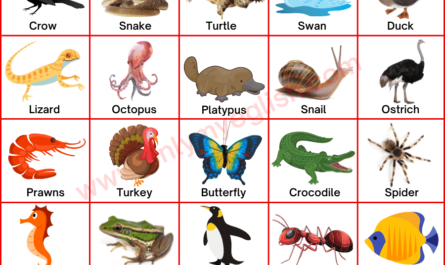Telling the time in English from the clock is quite easy only if we understand the criteria of reading and identifying the time schedules. Because there are a lot of different ways to identify the time as it looks like.
Time in English
In the beginning, it isn’t very clear the time reading and a bit more when someone asks us about the time. Telling the time is not just identifying the numbers mentioned in the clock. It is something more than that.
Here we have covered common rules and interesting ways to understand, identify, and memorize the time and different ways to say them when anyone asks us about the time. We can tell the time in different ways depending on the situation and our lifestyle.

Different Ways to Tell the Time
- Saying hours first and then the minutes. (Hour + Minutes)
- Saying minutes first and then the hours. (Minutes + [past / to] + Hour)
- Telling the time by using O’clock.
- Telling the time by using AM / PM.
- Telling the time by the expressions.
- Saying hours first and then the minutes (Hour + Minutes):
If someone asks for the time, then we can tell them the time by saying the hour first and then after the minutes in that respective hour.
For Example,
- 06:55; It’s Six Fifty-Five.
- 12:35; It’s Twelve Thirty-Five.
- 09:07; It’s Nine O-Seven.
- 11:11; It’s Eleven Eleven right now.
- 10:59; Its Ten Fifty-Nine.
Saying minutes first and then the hours (Minutes + [Past/To] + Hour):
We can tell the time by saying the minutes first and then after the hour in that respective hour if someone asks for the time. A little difference occurs here, depending on the minutes.
- When the time is between 1-30, in minutes, we have to address ‘Past or After’ after the minutes.
- When the minutes are between 31- 59, we have to address them as ‘To’ after the minutes.
For Example,
- 06:55; It’s Five to Seven, or It’s Five remains to Seven o’clock.
- 11:35; It’s Twenty-Five to Twelve.
- 09:07; It’s Seven past Nine, or It’s Seven after Nine.
- 11:11; It’s Eleven past Eleven.
- 10:59; It’s One to Eleven.
If the time is 15 minutes past the hour, then we have to use ‘Quarter Past.’
- 08:15; It’s (a) quarter past Eight.
If the time is 15 minutes before the hour, then we use ‘Quarter to.’
- 03:45; It’s (a) quarter to Four.
And, if it is 30 minutes past the hour, then we use ‘Half-past.’
- 12:30; It’s half past Twelve, or It’s Twelve Thirty.
Telling the time by using O’clock (Hour + o’clock):
This format is used to tell the time when the time is around an hour without minutes.
For Example,
- 12:00; It’s Twelve o’clock.
- 03:00; It’sThree o’clock.
- 08:00; It’s Eight o’clock.
Telling the time by using AM / PM:
The time format is of two types, 12 hours format and 24 hours format.
The AM and PM stand for Anti-Meridiam and Post-Medium, respectively.
We can also use them to tell the time depending on the day and night timing.
The AM is used with the time between 12:00 midnight to 12:00 noon. And the PM is used between the time 12:00 noon to 12:00 midnight.
For Example,
- 11.00 AM; It’s Eleven AM.
- 04.47 PM; It’s Four Forty-Seven PM.
- 01.16 AM; It’s One Sixteen AM.
- 09.40 PM; It’s Nine Forty PM.
If we use 24 hours schedule in time format, then
- 08.00 am will be 08:00 o’clock and
- 08.00 pm will be 20:00 o’clock.
Telling the time by the expressions:
There are few time expressions that can be used while telling the time to someone.
They are,
- Early morning (between 12.00 AM to 06.00 AM), Dawn.
- Morning (between 06.00 AM to 12.00 PM), Noon.
- Afternoon (between 12.00 PM to 06.00 PM), Dusk.
- Evening (between 06.00 PM to 12.00 AM), Night.
Read Also:





